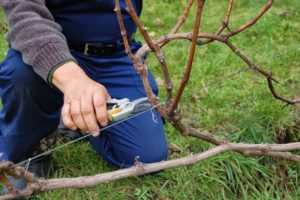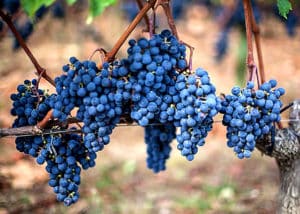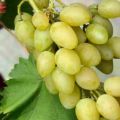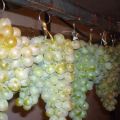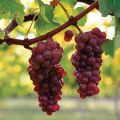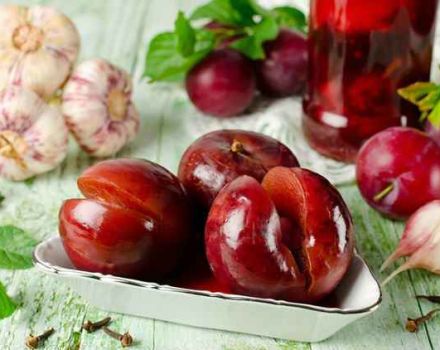Description and yield of the Velika grape variety, main characteristics and history
Velika belongs to large grape varieties, suitable for industrial and private cultivation. The plant also carries a decorative value, as it has a beautiful vine with colorful leaves. The grape variety is large, under optimal growing conditions, produces a tasty, moderately sweet (but not sugary) harvest. The species belongs to the group of table grapes, not universal grapes. That is, the berries are consumed fresh, they are not suitable for further processing.
The history of the creation of the variety
The variety originated in 1987, as a result of the crossing of two cultures: Alphonse Lavalle, originally from France, and Aleppo (Bolgar), from Asia Minor. Both are canteen and have good tasters. The Velika hybrid was developed by the Bulgarian scientist Ivan Todor. In Bulgaria, the variety fully ripens by the end of summer and is considered medium early.
The species began to be officially "quoted" in 1997, since it was then that it was entered into the state register. It was warmly received by the tasters due to its unusual taste and pleasant texture. In Russia, this variety was not widespread until recently due to the high cost and difficulty of growing.
Description of Velika grapes
The plant itself is large and unusual. Some summer residents prefer to grow the vine only because of its decorative properties. In autumn, the leaves of the plant turn bright red.
Description of grapes:
- high bush, shoots reach 3-3.5 meters in length;
- leaves are small, rounded, with several lobes;
- clusters are large, gradually tapering towards the end (cylindrical);
- berries are large, also cylindrical, elongated.

One berry is the size of a matchbox. The fruits are dark, rich in color. The shade varies from deep burgundy to purple, but on the bush the ripe fruits look slightly blurry, dull. This is because they are coated with wax, which provides natural protection against damage and disease.
A bunch of grapes, on average, weighs from 800 grams to 1 kilogram, but reaches one and a half kilograms. One berry rarely exceeds 15-20 grams by weight. The sugar content of the variety reaches 17-19%; under optimal growing conditions, the fruits quickly accumulate sugar. Moderate acid.
The species does not tolerate persistent and severe frosts, and is not resistant to pests. At -23 ° C begins to die. In this regard, it is poorly suited for growing in the northern regions and even within the Middle Strip. Its ripening under the conditions of the Middle Lane lasts 130-140 days.
Distinctive characteristics
This grape has two distinctive features: unusually large berries and clusters, and overgrowth. The second quality is a tangible problem for gardeners. However, this can be adjusted with a stock. That is, to graft a rootstock grape variety to the root. With this method, other problems are also solved, for example, low resistance to frost and disease.
Velika is a high-yielding but unstable species that needs special care.
On average, he brings 8-12 kilograms of crops per tree or 300 centners per hectare of land. This is provided that the grapes are grown in a region with a warm climate.
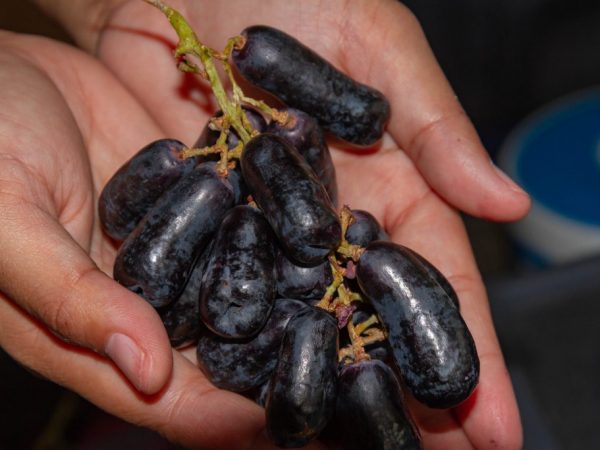
What are the pros and cons?
With the proper approach to cultivation, there are more advantages than disadvantages. Velika is a tasty variety that tolerates transportation well. It is high yielding and rare, therefore suitable for sale. These grapes are stored safely in the refrigerator without losing their taste. It has a resilient texture. Velika tastes like sweet cherry. Wasps practically do not touch this grape because of its dense skin.
Minuses:
- low resistance to cold, diseases, mold;
- difficulties in growing;
- overgrowth that is only regulated by grafting.
Grapes need not only be grafted, but also processed.
Selection of seedlings and plot
It is necessary to choose seedlings with a preserved root system. Each seedling should have 3-4 roots. It is good if the shoots give an increase of at least 25-30 centimeters. If the seedling meets these characteristics, then it can be safely planted on your site.
Suitable for planting is that part of the garden that is well ventilated and located in the south-east or south side. The soil should not be waterlogged, otherwise drainage should be done.
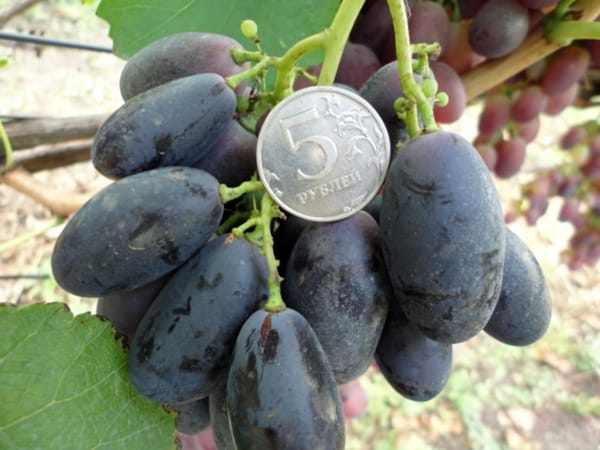
Planting and leaving
For the seedling, a hole is dug 90-100 centimeters deep, 50-70 centimeters wide. The hole consists of 3 layers: the lower one is drainage, the middle one is fertilizers and soil, and the upper one is only soil. In this case, the roots of the plant are in contact with unfertilized soil. Occasionally grapes are planted in sandy soil. This is done to protect the plant's root system from phylloxera.
Variety care consists of several rules:
- moderate watering (with high humidity, fungi begin to appear);
- grafting - stock (in particular phylloxera-resistant varieties);
- treatment (Fundazol - from gray rot, fungicides - from fungi, insecticides - from insects).
The plant quickly develops immunity to preparations for processing, so they need to be alternated. In the cold season, the grapes are sheltered from frost. It is not worth covering with plastic wrap, as the vine can grow out. Multilevel supports are required to support the plant.
Diseases and pests
The grape has a low resistance to Alternaria, mildew, gray mold, anthracnose, powdery mildew. That is, to all common diseases. The thick skin protects the berries from insects, but occasionally birds and aphids attack the bushes. Insecticides save well from aphids. Also, this variety is absolutely not resistant to phylloxera, which is why, in the absence of vaccinations, the bushes can completely die.
Breeding features
Reproduction takes place in two ways. First, grafts are made (on other types of grapes) with green cuttings in the split. Carried out in the spring, placed at any height. Secondly, cuttings capable of producing roots are used as seedlings. This method is not suitable if the plant is "sick" with phylloxera.
Lignified cuttings are also used for grafting. They are placed in the bole: in its underground or above-ground part. With the help of a sharpened knife, a cut is made into which the cutting is subsequently placed.Then this place is pressed, treated with pitch (resin, special garden "putty") and tied with twine.

